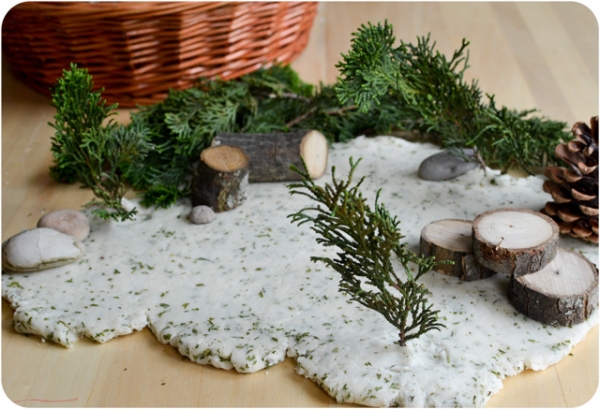
In the previous article we set up an activity to illustrate a few basic principles of the Montessori approach. Today we are continuing the series, exploring what some alternative education systems are like. We are going to have a look at the works of the Austrian philosopher, Rudolf Steiner, who opened the first Waldorf school in 1919.
Waldorf education consists of three stages, based on the age group. The first one starts from birth and lasts until children reach seven years-old. This is the one we will focus on as well. According to Steiner, simplicity and order should dominate this period of children's lives. Waldorf pedagogues strongly recommend cutting down on any technological intervention during these first years and using toys that are made of natural materials or taken directly from nature: wooden blocks with bark still on them, pine cones, and sticks. Instead of dolls with realistic faces and body features, in Waldorf classrooms you will find cloth dolls with embroidered eyes and yarn hair.
Let's see if natural materials and play-dough will be enough for an afternoon of fun in our house. First, we went outside and looked for things to fill a nature basket with. Rocks, pebbles, fallen branches and leaves. We had a couple of seashells from our last trip to the beach and added them too. Our neighbour was pruning her junipers, and we got a branch from her. Done.

For a philosophy that pays such particular attention to natural materials, it is worthwhile to make a batch of play-dough at home. What I like most about home-made play-dough, aside from the knowing exactly what I put into it, is having an opportunity to improvise: sometimes I mix a tablespoon of lemon zest in, and this time I added a pinch of dried parsley.
An invitation to play is ready! What can we do with it?
We rolled the dough out, and it became the ground of our forest. Juniper branches turned into trees, and the pine cone became a fur tree. Little pebbles got to be big rocks in this miniature world. Arranging and re-arranging the landscape was very entertaining, and also a great exercise for fine motor skills and associative thinking.
In the end, my son brought a few inhabitants to play in the forest. Using realistic figurines of animals is not a strictly Waldorf practise, but we could not turn a fox and a rabbit out.
Related Article: Reggio Emilia Approach with Play-dough

Waldorf toys are left simple to give children an opportunity to strengthen their imagination and have open-ended games. Then a piece of bark can become a table, or a boat, or a door to the enchanted forest, the possibilities are inexhaustible! Collecting materials does not begin with a trip to the store, but with a walk in the woods to pick up acorns and leaves, branches and pine cones. Brought inside and placed in a basket, they give a unique, aesthetically-pleasing look to children's toy shelves, and can be used in many games with building blocks and pretend activities.

Related Article: 5 Ways to Encourage Creativity Through Play